Amish Making RVs (Video)
Did you know that Amish are heavily involved in building recreational vehicles? We’ve touched on this topic in the past, in posts like Why are Amish building RVs? and 3 Concerns for Amish Working in the RV Industry.

The funny thing is that these are really some luxurious vehicles that don’t seem at all to fit an “Amish” way of life.
Yet Amish workers are key to the workforce cranking these six-figure homes-on-wheels out on a grand scale.

These are sumptuous consumer items and for a casual observer, probably about the last thing you’d think of Amish being involved with. Just have a look at this interior:

Todays models are definitely more “lux” than what I recall.
But with the Amish, just because you make something, doesn’t mean you have to make it a part of your life. Which is one reason the RV industry is the most important part of the “Amish economy” in northern Indiana.
So here’s a neat 3-minute video giving you a look inside of Newmar, one of the major players in the Indiana RV industry.
The host, product trainer Nick Whitehead, takes you through the basic process of making an RV, showing you the different stops along the way.
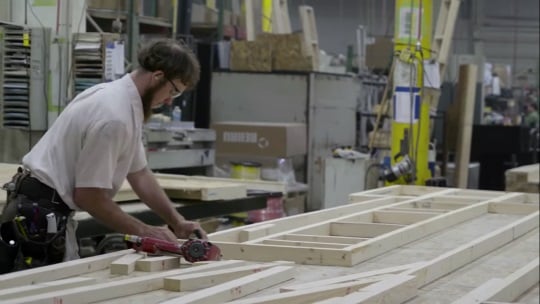
This is a promo video, but less “commercial” and more “informational”.
You’ll see a lot of shots of Amish workers at various stages in the process (English workers too).

This doesn’t give you every last detail of how an RV is made, but it takes you through the general procedure.
Everything begins from the chassis, the foundation so to speak. Gradually other elements gradually get added on, like sidewalls and porcelain flooring.

Workers install a “cathedral ceiling” which gives six additional inches of space in the bathroom.

Then they move on to the electrical system, and then insulation. The construction, Whitehead explains, is similar to what you’d find in your home.
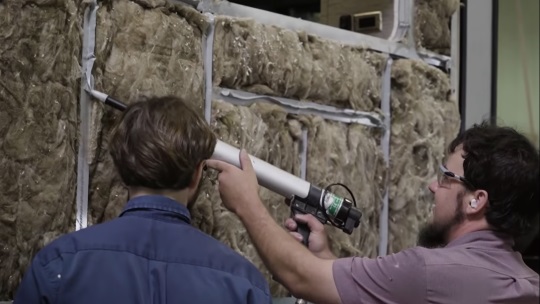
Next comes the fiberglass “skin” of the exterior, with holes made for the windows and doors. That’s followed by interior installations.

Then it goes to another facility for painting. After quality checks and “final finish”, it can be shipped.
These are skilled workers and the video really shows how much goes into making the RV (a point the host makes himself).
I’m not normally so into “how things get made” videos, but this one is worth a watch:
The Amish Kitchen & RV Industry Challenges
On a related note, Amish Kitchen writer Lovina Eicher mentions in a recent column how work has been slow lately for her husband, who works in the RV industry. This ties in to one of the “3 Concerns” referenced in the above post I linked.
The thing about the RV industry is that it is good money and often fits well with an Amish schedule, but the industry is pretty cyclical. It tends to go through boom and bust times.
For instance, the Elkhart/Lagrange County area had one of the highest unemployment rates in the nation during the 2008-09 recession, getting up to around 20%.
This was tied to the downturn in the RV industry as non-necessities tend to be forgotten during economic hard times. The price of gas can also negatively affect sales.
So Lovina’s column here comes as no surprise. She relies on prayer and God. “Do we thank him enough for our many blessings?” she asks:
It’s 4:30 a.m. and son Benjamin, 19, just left for work. My husband Joe left over an hour ago to travel to his job.
Joe has been working at the RV factory for more than 14 years now. He has a 45-minute drive to and from the factory. With the road conditions this winter we can’t be thankful enough when they get there and back safely every day. Son-in-law Mose and Joe ride with a man who also works there and doesn’t live too far from us.
Next week there isn’t any work at the RV factory, so Joe has a week off again. It sure makes a few more worries to not have that paycheck. I often think of the words “why worry if you can pray?” God always provides some way or another. Do we thank him enough for our many blessings?





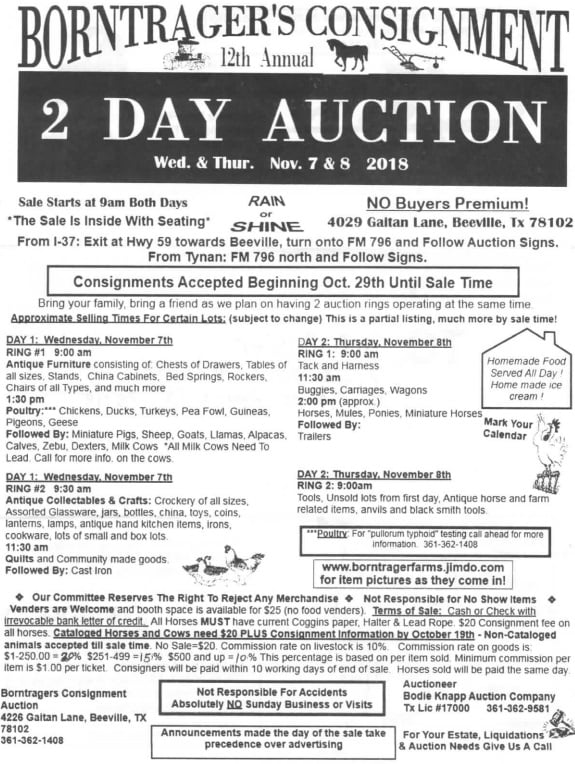
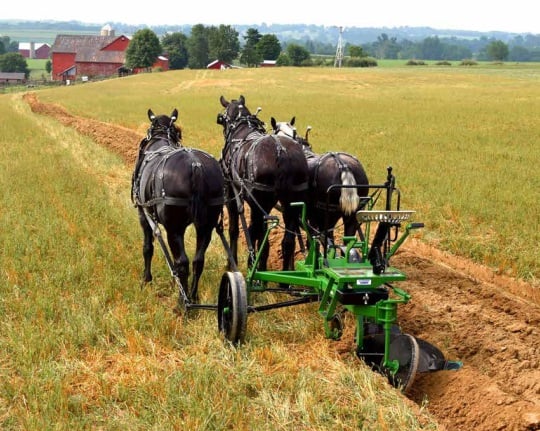

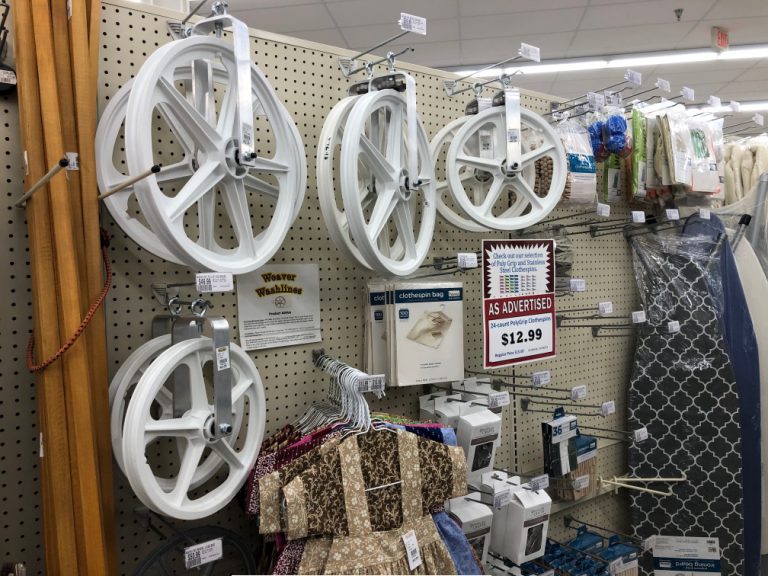
Good work..
Hello, the ideal of Amish i people is to work the best you can…and since they have a philosophy based of the Bible .,they work with God besides them …so they have to be correct..hard working .,and be as honest as can be…normally this is what we should expect from anyone …but in these days it’s not the case…i really do appreciate the Amish mentality..even if it could be for some ..very strict..and some don’t treat well the animals for that last one i really don’t like this point!!! .,besides those two points … .,,i do wish that more and more people would adopt their honesty …etc….and skills…
I am not saying that people should become Amish..,not at all ..me for instance i am vegetarien…and have my ixn way if thinking and considering life…..i believe in reincarnation …nothing to do with what the Amish believes in or go by …but i really do respect them ..and like the way they live…..
Angie's View on Good Work
Thank you, Angie. The Amish seem to represent a way of living all of us could learn from. Whether at work, community, or home, we should try to do the best we can, be as honest and helpful as we can, to everyone we come into contact with. I’m not sure any one religion or set of beliefs determine how well we accomplish those deeds. All I can do is try my best, not dwell on past failures, and try to do better next time around.
Making RVs
I’m used to the Amish farming – dairy farming and all kinds of farming, carpentry from furniture to sheds, house building and flipping, barn raising, Amish women and their gorgeous personal gardens, operating bulk stores, farmers market booths over the summer weekends, etc. Their homes have wood stoves and many pumped water!
When I see the inside of these RVs — some of the interiors far out in design, I wonder what the Amish must be thinking as they build them. It almost looks like a conflict of interest.
Outside influences?
Question, when did this start happening and by whom.
As you say in your article this is not the norm with the Amish.
To me this feels like the beginning of the end of Amish culture, the same applies to Christianity in the outside world.
I take it you have heard of the New World Order who are trying to eliminate all Christian values, the Amish would be in this criteria as well.
Why are the Amish building RV’s? They can only be for sale to the outside world, so somebody is going to make a lot of money, the root of all evil. have the Amish fallen into this trap, I hope not.
I see a massive upheaval coming within the Amish community, the old school and old ways, and the youngsters and new ways and money.
Who brought in this idea to the Amish and why? Is this person revolting against the Amish? Is there a hidden agenda?
I am sorry, I see nothing good coming of this!
I love the way the Amish were, that is why I follow them. I would love to create an Amish settlement here in South Africa, but that is going to be very difficult with this present Black governments mind set who are bent on killing all the Whites in the country and I am of that ethnic group, White.
So in the best interest and the future existence of the Amish as we know it, shut down this factory and go back to your old ways.
You may have a revolt, not caused by your youngsters, but by an outside source that is out to destroy the Amish and their values.
May God be with you and your people.
Hi Anthony,
I don’t think this will change the cultural makeup of the Amish. The Amish population in the U.S. is too dispersed by geography and church districts that the economic concerns and occupations of these northern Indiana Amish have no influence on Amish in other parts of Indiana, let alone Pennsylvania or upstate NY. For that matter on even more conservative branches of the Old Order.
I’ve been around the Amish long enough to know that not all Amish are the same and what influences one, won’t influence the other. When one church moves more into “the world”, another church holds it further away. That is just my perspective having been around them long enough. Only a seismic shift in culture, across hundreds of communities and thousands of church districts would there be a real threat to the Amish way of life. There are so many (yet very similar) variations of being Amish that only a nationwide cultural shift could destroy their lifestyle.
Agree
Hello, i agree about either amish’s or ALL OTHER RELIGIONS …are making a severe change in their life style …wakening up to science in general…and colparing what is said in their Holy Bibles could it be Coran or Bible or else..new generations are thinking more outside of the bow…without rejecting the basic of their beliefs… and this is normal…what i personally would not like to see is the mentality changing in their way to consider their work ..the straitness of mind..without being too severe and regid…but who is perfect?…
And specially the way to live off grid not depending on the modern ways of living too much…taking the good part of each thing without completely stepping inside the box….
I hope that the young generation can realise this …they have to…otherwise they will be just like the ones we see in towns…completely lost ..when a dab of this or a dab of that is missing…
Having different ways of living their religion like you said is normal…even in christianity it is the same in protestanisme also……men are men ..even the Pope is a man..sorry ..even he has a bad time knowing what to do with the scandale of pedophilia he is dealing with now, …
opennely which the others didn’t tackle at all…
So on earth you can have such and such title…it means nothing in front of our univers….only the person himself knows where he stands on the lader of evolution….
But to come back on the amish’s…i hope the young ones will ..think …and see those things …bard to tell what will become of those who does the RV’s worker…..it could be that they take pride..doing a beautiful job…. ….
Why?
Anthony, it’s basic economics. There is no more inexpensive land to buy. So what are the Amish going to do? They still have large families. But only one or two of the kids will get Mom and Dad’s farm. So, what are the other 5 to 8 kids going to do to survive. RV construction is available and pays the bills. Most of the Amish in N. IN do not live on big farms. In fact most are on a couple of acres which is enough to have a decent garden and support a couple of horses. But that’s it. Building RV’s is no different that building furniture, trinkets, rugs, baking or whatever. They, the Amish, are not consumers of there labor so it’s not a conflict for them to make that stuff. When the Amish were pressured by society to conform they simply left their homeland of Germany and came to America. If America pressures them to change there is no “new” country for them to go to. the world is full and this is it, and the best place for them.
Derek
Derek, Well said. The Amish community has been furnishing labor for the RV industry for decades. Some of the oldest and most respected RVs companies in the country started, and still operate, in rural Indiana. I would venture to guess the Amish also own and work in numerous businesses that supply cabinets, flooring, etc. that make up components of the RVs. Good workers are a treasure anywhere, in any industry.
Vehicle construction
Hi, I guess if it is a form of income if there is non other forthcoming and their community agree with it, all is fine/
I just hope they do not get sucked into the evils of the outside world, as I think their values and what they stand for is great.